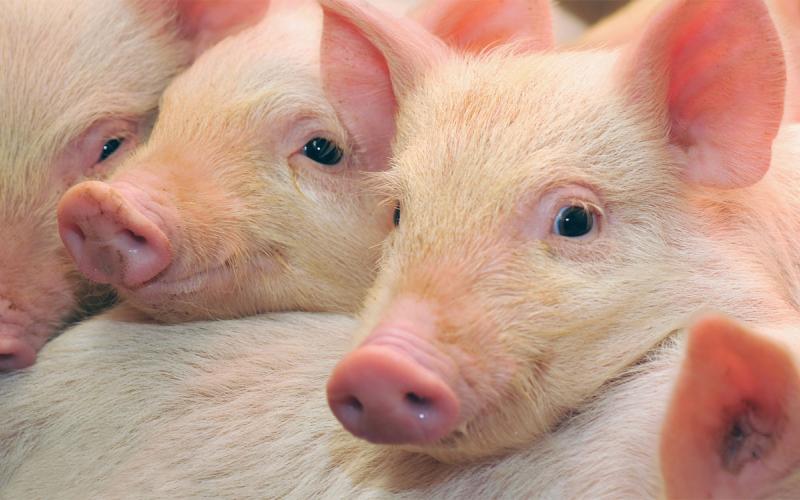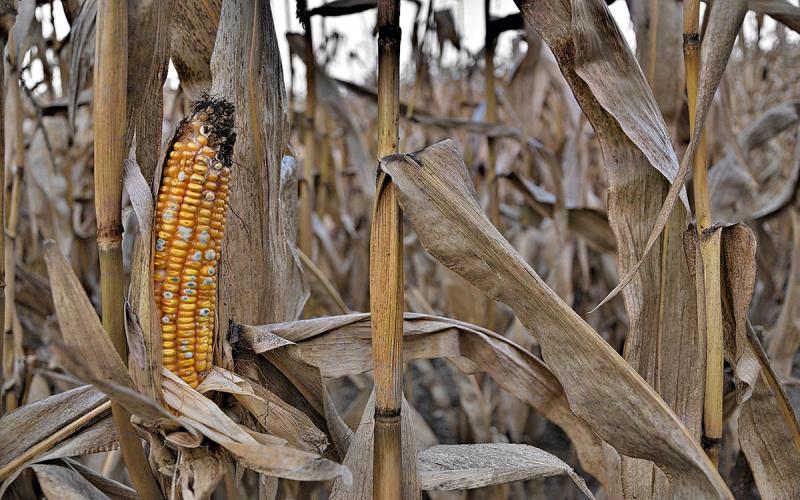Written collaboratively by Ryan Samuel and Crystal Levesque.
Feed additives are low incorporation, non-nutritive, feed ingredients designed to provide benefits in the growth, feed efficiency, and/or feed intake of animals and ultimately lower the cost of production. There is a myriad of commercially available feed additives with associated claims. This makes it difficult to recommend which feed additives swine producers should choose. These feed ingredients do not contribute to the daily nutrient supply of the animals. Instead, feed additives influence the profitability of swine operations through different mechanisms.
In the wean-to-finish commercial research facility at South Dakota State University, 1,100 growing pigs (approximately 110 lbs starting weight) were divided among 44 pens and assigned to one of four dietary treatments, based on the incorporation of a feed additive combination, in a five phase feeding program up to marketing. The dietary treatments were as follows: 1) Control: SDSU formulated grow-finish phase diets; 2) Positive control: Control diets plus feed additive combination in all phases; 3) Pulse dose: Control diets plus feed additive combination in phases 1, 3, and 5; 4) Finisher: Control diet plus feed additive combination in phase 5 only.
Providing artificial sweeteners in the diet has been shown to increase the intestinal expression of sodium-glucose co-transporter-1 (SGLT-1). The function of the SGLT-1 protein is to transport dietary glucose across the cells of the intestine into the body. The transport of glucose occurs against the concentration gradient by harnessing the naturally occurring sodium concentration gradient. An extract from chili peppers, capsicum oleoresin, has been shown to reduce the inflammatory effects of heat stress in swine. Therefore, a feed additive combination of a high-intensity sweetener and capsicum oleoresin was investigated in this trial.
Bulk meal feeds were delivered to all pens utilizing an automated feed delivery system. Trial diets, without or with a feed additive premix providing 90.9 g of the feed additive combination per ton, were delivered to pens according to the assigned dietary treatment. The feed additive combination premix was prepared with 5 lb of corn per ton, as a direct replacement for corn in the diet formulation. Diets, fed in five trial phases, were formulated to include 20% corn germ meal to partially replace corn and soybean meal after Phase 1. Diets were formulated to meet or exceed the nutritional recommendations according to National Research Council (2012) for expected pig weight range and the minimum digestible lysine specifications (Table 1).
| Trial diet phase | Total lysine, % analyzed | Trial diet duration | Approximate pig weight range |
| Phase 1 | 0.92% | 14 d | 110-140 lbs |
| Phase 2 | 0.83% | 14 d | 140-180 lbs |
| Phase 3 | 0.79% | 14 d | 180-220 lbs |
| Phase 4 | 0.72% | 21 d | 220-265 lbs |
| Phase 5 | 0.65% | 28 d | 265-300 lbs |
Pigs were weighed every 2 weeks for the determination of growth performance simultaneously with feed disappearance. Pigs were marketed at the end of the 13-week trial and carcass characteristic data was obtained from the commercial packer by treatment group. Pigs were marketed by removing 11 of the heaviest pigs per pen according to the four experimental treatment groups.
The average daily feed intake (ADFI, lbs/pig/d) was not affected by treatment in Phase 1, 2, and 4 (Table 2). In Phase 3, when pigs received diets containing the combination after having not in the previous period (i.e. Pulse dose), ADFI was greater (P>0.01) compared to the other treatments. In the final period, Phase 5, the ADFI of pigs that received the diets containing the feed additive combination was lower (P<0.05) when compared to for the Control.
| Control | Constant | Pulse | Finisher | SEM | p-value | |
| ADFI, lbs/pig/d | ||||||
| Phase 1 | 4.4 | 4.4 | 4.4 | 4.4 | 0.1 | 0.995 |
| Phase 2 | 4.7 | 4.7 | 4.8 | 4.6 | 0.1 | 0.512 |
| Phase 3 | 5.6b | 5.4b | 5.9a | 5.6b | 0.1 | 0.002 |
| Phase 4 | 6.6 | 6.6 | 6.5 | 6.5 | 0.1 | 0.553 |
| Phase 5 | 7.4a | 6.9b | 6.8b | 6.9b | 0.1 | 0.043 |
| Within a row, values without common superscripts differ (a,b,c P < 0.05) | ||||||
The overall average daily gain (ADG, lbs/d), feed efficiency, and average body weight were not affected by treatment.
The carcass characteristics of fat depth (in), loin depth (in), and lean depth (in) were not affected by treatment (Table 3). Despite greater (P<0.02) live weight of Control pigs than pigs fed Constant or Pulse incorporation of the feed additive combination, base price and price/cwt were greater (P≤0.05) in all groups fed the feed additive combination.
| Control | Constant | Pulse | Finisher | SEM | p-value | |
| Fat, in | 0.89 | 0.89 | 0.87 | 0.86 | 0.02 | 0.858 |
| Loin, in | 2.97 | 2.95 | 2.95 | 2.99 | 0.01 | 0.180 |
| Lean, in | 55.25 | 55.20 | 55.35 | 55.55 | 0.17 | 0.594 |
| Base ($) | 54.82c | 55.97ab | 56.48a | 55.75b | 0.33 | 0.014 |
| Prem ($) | 7.49x | 7.24yz | 7.17z | 7.42xy | 0.13 | 0.052 |
| $/cwt | 62.30b | 63.23a | 63.66a | 63.16a | 0.41 | 0.017 |
| Carcass wt, lb | 237.5x | 233.3xy | 230.0y | 233.5xy | 1.38 | 0.076 |
| Live wt, lb | 310.5a | 306.5b | 299.5c | 307.5ab | 2.90 | 0.009 |
Under commercial conditions, incorporation of a feed additive combination of a high-intensity sweetener and capsicum oleoresin resulted in $0.90 to $1.30 more per cwt of carcass, depending on incorporation strategy, based on the heaviest 11 pigs/pen being marketed first. In this trial, providing the combination for 28 days before marketing, provided the best potential return on investment compared to including the feed additive combination throughout the entire grow-finish period (Constant) or in alternate dietary phases (Pulse).
Reference: Moran, A. W., M. A. Al-Rammahi, D. K. Arora, D. J. Batchelor, E. A. Coulter, K. Daly, C. Ionescu, D. Bravo and S. P. Shirazi-Beechey. 2010. Expression of Na+/glucose co-transporter 1 (SGLT1) is enhanced by supplementation of the diet of weaning piglets with artificial sweeteners. British Journal of Nutrition (2010), 104, 637–646.


